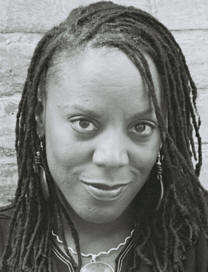What Hangs on Trees
Alumna Glenis Redmond (poetry, ’11) discusses poetry and the southern landscape in Orion Magazine.
I AM SIMULTANEOUSLY enchanted and haunted by trees.
As a child, I was a tomboyish tree-climbing tree lover—a daydreamer held in mahogany arms. If I went missing, my family knew where to find me: perched on a branch, peering up into the sky or speculating about the world below. Then, I did not know the word sacred, but I sensed the meaning, especially sheltered from the world by a dome of emerald leaves. It was the one place where I felt the most whole. I experienced an inexplicable kinship with trees, which is probably why I developed an insatiable curiosity to learn their names: maple, pine, birch, willow . . . Live oaks were my trees of choice.
At that time, there was no way for me to grasp the shadow side, to investigate the tangled depths of my psyche in regard to trees, especially those gnarled live oaks. My dual consciousness was related to the land, especially land below the Mason-Dixon line. But I didn’t realize just how severe the dichotomy was until graduate school, when I was asked to write a pastoral poem, a poem that regales the bucolic aspects of nature. When I attempted to write the poem, I hit a wall, a psychological and historical one. It wasn’t until my last semester, when I studied a poem from Lucille Clifton’s book Mercy that I began to understand why the pastoral poem was causing me so much deep-seated angst. Clifton’s untitled poem begins:
surely I am able to write poems
celebrating grass ….[Keep Reading]…




